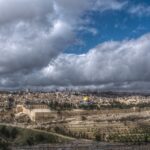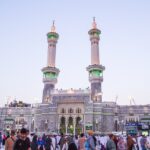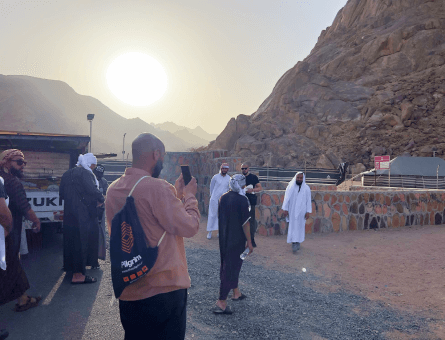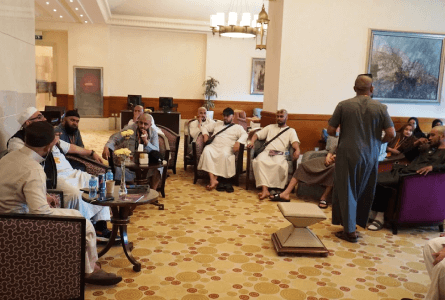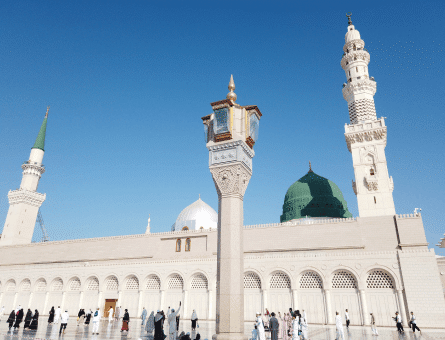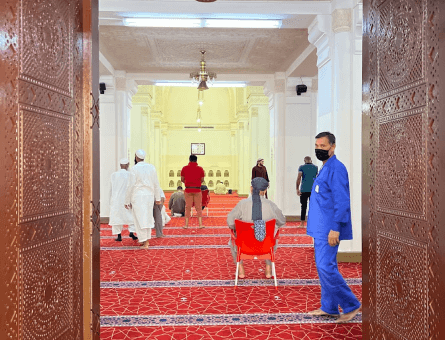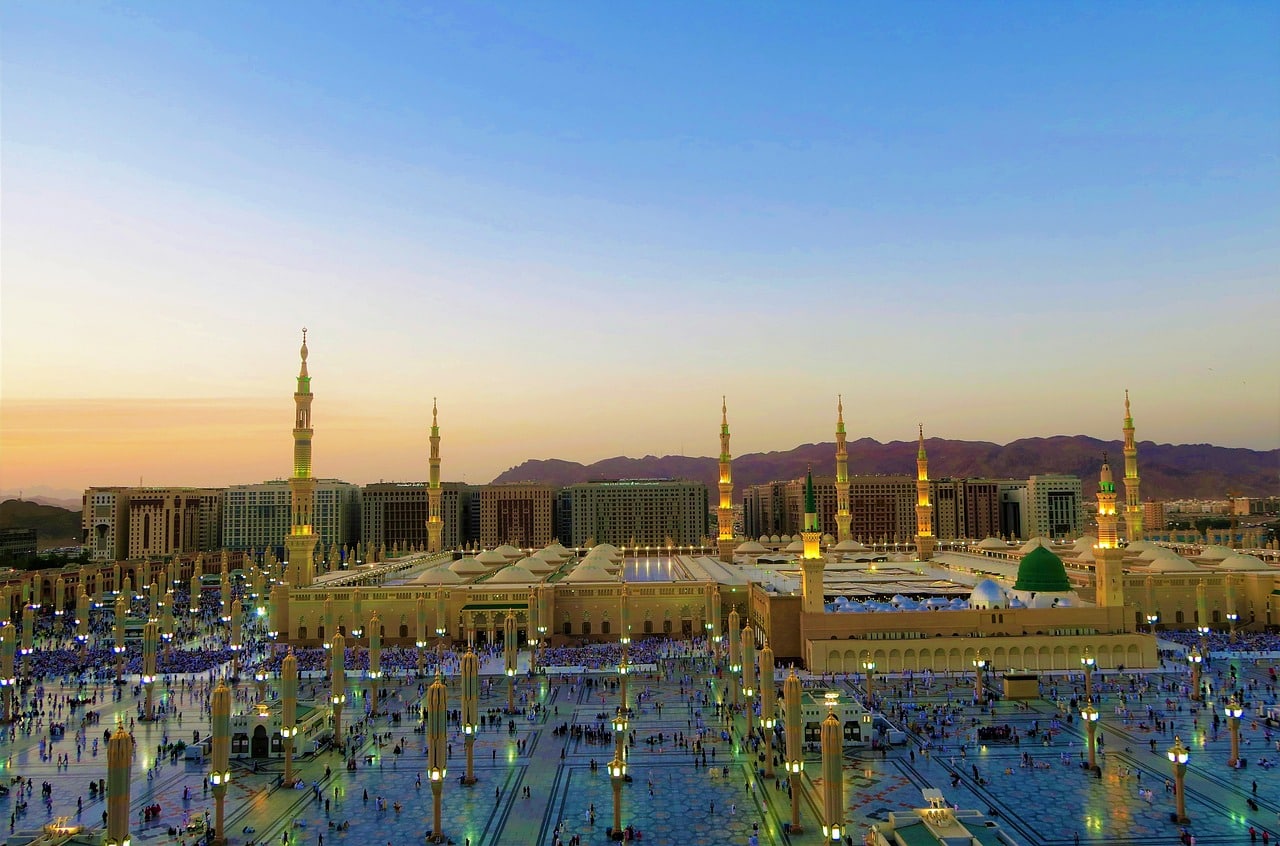Gates of Masjid Al Nabawi – List of all 42 Doors
Masjid Al Nabawi, as the name says, is the mosque of Prophet Muhammad (SAW), located in the heart of Medina, which holds unparalleled significance in the Islamic world.
It stands as a testament to Islam’s rich history and spirituality. Among the many architectural and spiritual marvels housed within its walls, the gates (bab) of Masjid Al Nabawi command a special mention.
Let’s delve into the historical, architectural, and spiritual aspects that make these gates more than mere entrances. It is included among the historic and religiously sacred sites of Saudi land.
List of Masjid Al Nabawi Gates
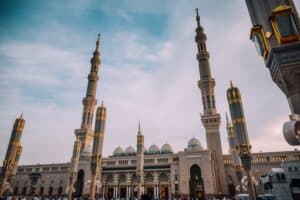
- Bab As-Salam – Gate 1
- Bab e Abu Bakr – Gate 2
- Bab ur Rahman – Gate 3
- Hijrah Gate – Gate 4
- Bab e Quba – Gate 5
- Gate 6 of Masjid Al Nabawi
- King Saud Gate – Gate 7,8 and 9
- Imam Bukhari Gate – Gate 10
- Bab Ul Aqiq – Gate 11
- Bab e Sultan Abdul Majeed – Gate 12, 13 and 14
- Bab Umar Ibn Khattab – Gate 16, 17 and 18
- Bab Badr – Gate 19
- Bab King Fahad – Gate 20, 21 and 22
- Bab Ohad – Gate 23
- Ban Uthman Bin Affan – Gate 24, 25 and 26
- Bab Ali Ibn Abi Talib – Gate 28, 29 and 30
- Bab Abu Zar Ghaffari – Gate 31 and 32
- Bab e Abdul Aziz – Gate 33, 34 and 35
- Gate 36 of Masjid Al Nabawi
- Bab e Makkah – Gate 37
- Bab Bilal – Gate 38
- Bab Un Nisa – Gate 39
- Bab e Jibreel – Gate 44
- Bab Ul Baqi – Gate 41
- Bab Al Aiymah – Gate 42
The Architectural Tapestry of Masjid Al Nabawi
The grandeur of Masjid Al Nabawi extends beyond its religious importance. The architecture itself tells a story of evolution, with each era leaving its mark.
Amidst this splendor, the gates play a crucial role.
The compound of the mosque was stretched to fit Muslims at the time of the Prophet Muhammad (PBUH), but due to the increasing population and pilgrims, the Saudi expansions have served as a great way to accommodate all.
They are not merely entry points but intricate components contributing to the mosque’s overall design.
To truly appreciate Masjid Al Nabawi, one must understand these gates’ role throughout history. There are forty-two gates (42 bab), each of which holds significance and glory.
Unveiling the Gates: A Journey of Spirituality
Beyond their physical presence, the gates of Masjid Al Nabawi hold deep spiritual significance.
They are not just pathways into the mosque but symbolic portals representing a connection between the earthly and the divine.
The green dome of Masjid Al Nabawi is one of the most beautiful mosques in the world. It is commonly known as the prophet mosque, as the name implies.
Each gate (bab) carries a unique aura, inviting worshippers to experience spirituality in diverse ways.
This spiritual dimension adds layers of meaning to the gates, making them more than architectural elements.
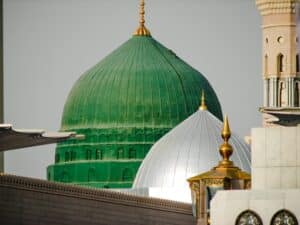
Preview of the Exploration Ahead
In the following sections, we will embark on a comprehensive journey through the gates (bab) of the holy mosque of medina; Masjid Al Nabawi.
From their historical roots to the intricate architectural details, we will uncover each gate’s names, meanings, and spiritual significance.
Delving into the unique features and individual stories, we aim to provide a holistic understanding of why these gates (bab) are not just entrances but gateways to a deeper understanding of Islam.
At the time of Prophet Muhammad (PBUH), there were only three babs, but with the help of Saudi expansion, there are now forty-two babs.
Historical Perspective
Historical Background of Masjid Al Nabawi
Masjid Al Nabawi, the Prophet’s Mosque (SAW), has its roots deeply embedded in the records of Islamic history.
Established by Prophet Muhammad (PBUH) himself, it stands as the second holiest site in Islam (mosque medina), after the Kaaba in Mecca.
The inception of this sacred mosque traces back to the early years of Islam when the Prophet (SAW) and his companions migrated to Medina.
It served not only as a place of worship but also as a community center, a judicial court, and a hub for various social activities. It is located in the heart of the city of medina.
To this day, few of Prophet Muhammad’s (SAW) belongings and his companions are safeguarded here.
The ProphetMuhammad (PBUH) gave many religious sermons and sessions here during migration and expansion of Islam.
Prophet Muhammad (SAW) was also close to the Quba mosque in Medina. It strongly links with Islamic history, nourishing and sheltering the brave early Muslims.
The Prophet’s (SAW) Vision: Foundation of Masjid Al Nabawi
In 622 CE, upon reaching Medina, Prophet Muhammad (SAW) and his companions laid the foundation stones of Masjid Al Nabawi.
The Prophet Muhammad (PBUH) and his companions built the mosque, including the walls, the interior, and the gates (bab).
The mosque’s construction began a thriving community and played a pivotal role in establishing the nascent Islamic state.
The magnificent bab (gates) of the Prophet’s mosque exemplify exceptional infrastructure. Over time, Saudi expansion has only enhanced its magnificence.
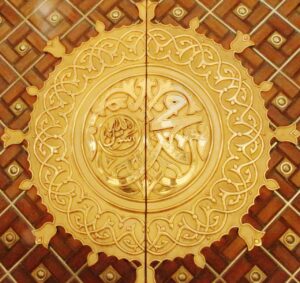
Growth Through the Prophet’s (PBUH) Era
Over the years, under the Prophet’s SAW guidance, Masjid Al Nabawi underwent expansions to accommodate the growing Muslim community.
The essence of these expansions was not merely physical; they symbolised Islam’s spiritual and communal growth.
These expansions have been a great help in accommodating millions of Muslims within the compound of the mosques.
Evolution of the Mosque’s Structure Over Time
The Caliphs and Expansions
Following the Prophet’s SAW passing, the caliphs who succeeded him continued the expansion and enhancement of Masjid Al Nabawi.
The expansion was not only restricted to the inner compound, but it also retrieved certain parts of the neighboring buildings which had to be included in the boundaries of Prophet Muhammad’s (PBUH) mosque.
With the help of the Saudi expansion, there are now forty-two gates (bab) for the entry and exit to the compound.
The Umayyad and Abbasid caliphates, each in their era, contributed to the mosque’s architectural evolution. Initially, the length of the wall was ninety-three meters, but after the expansion it has significantly increased.
The expansions were not just about accommodating larger congregations; they also aimed to preserve the historical significance of the mosque.
Architectural Transformations Through Dynasties
As Islamic dynasties of Saudi Arabia rose and fell after Prophet Muhammad’s (SAW) era, Masjid Al Nabawi witnessed architectural transformations, reflecting the distinctive styles of each era.
The Ottoman Empire, in particular, left an indelible mark with extensive renovations, the addition of intricate details, and the expansion of the walls, further enhancing the mosque’s aesthetic appeal.

Role of the Gates in Different Eras
Gates as Historical Witnesses
The gates (bab) of Masjid Al Nabawi have played a silent yet significant role in shaping the historical narrative of the mosquelocated in the heart of Saudi Arabia.
Each gate (bab), with its unique design and structure, reflects the socio-political climate and architectural preferences of the era it belongs to.
Symbolism in Design
Throughout history, the gates (bab) have been more than mere entrances. They served as symbols of authority, cultural identity, and spiritual significance.
For instance, the bab bore distinct Ottoman architectural elements during the Ottoman era, reflecting the empire’s influence.
Cultural Shifts and Gate Modifications
As political and cultural landscapes shifted, the gates and their respective walls underwent modifications, aligning with the prevailing sentiments of the time.
This adaptive nature ensured that Masjid Al Nabawi remained a living testament to the dynamic history of Islam.
In the next section, we will delve into the architectural splendor of Masjid Al Nabawi’s gates, exploring the intricate details of the Saudi expansion that make them stand out in the rich tapestry of Islamic architecture.
Architectural Splendor
A Closer Look at the Architectural Marvels
Masjid Al Nabawi stands not only as a spiritual sanctuary but also as a masterpiece of Islamic architecture.
Each element, from minarets to domes, reflects a meticulous blend of artistic expression and religious symbolism.
However, within this architectural splendor, the gates of Masjid Al Nabawi emerge as true marvels, showcasing the intricate craftsmanship and cultural richness inherent in Islamic architecture.
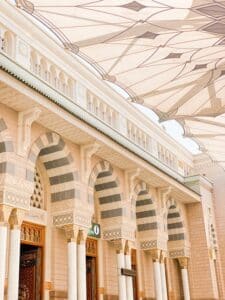
Architectural Harmony: Unifying Elements
The architectural design of Masjid Al Nabawi is a testament to the seamless integration of various elements.
Everything contributes to a harmonious and spiritually uplifting atmosphere, from the geometric patterns adorning the walls to the calligraphy enhancing the interiors.
As integral parts of this design, the gates play a crucial role in maintaining this visual harmony.
Islamic Architectural Styles: Influence on Masjid Al Nabawi
Early Islamic Architecture
The roots of Masjid Al Nabawi’s architectural style can be traced back to early Islamic architecture, characterised by simplicity and functionality.
During the Prophet’s (SAW) era, the initial construction embraced a modest approach, focusing on creating a space for communal worship. The essence of simplicity persisted even as subsequent expansions took place.
Umayyad and Abbasid Influences
As the Islamic empire expanded, so did the architectural influences on Masjid Al Nabawi. The Umayyad and Abbasid caliphates introduced elements such as horseshoe arches, intricate tilework, and geometric patterns.
These additions enhanced the aesthetic appeal and reflected the grandeur of the Islamic civilisation.
Ottoman Renaissance
The Ottoman era marked a significant chapter in the architectural history of Masjid Al Nabawi. The Ottomans, known for their elaborate and ornate designs, left an indelible mark on the mosque.
The addition of calligraphy, ornamental tiles, and intricate domes transformed Masjid Al Nabawi into a masterpiece of Ottoman architecture.
The Gates: Pinnacle of Masjid Al Nabawi’s Architectural Design
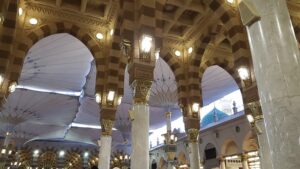
Beyond Functionality: Symbolic Significance
While the gates serve the practical purpose of entry and exit, they go beyond mere functionality. Each gate is a canvas of intricate carvings, geometric patterns, and verses from the Quran, adding layers of symbolism to its design.
The gates, therefore, become more than thresholds; they become expressions of faith and cultural identity.
Unique Gate Names and Themes
The gates of Masjid Al Nabawi are not homogenous; each bears a unique name and theme.
For example, the Gate of Jibril (Gabriel) may have motifs associated with the archangel, while the Gate of Peace may emphasise tranquility through its design.
This thematic approach adds depth to the architectural narrative of the mosque.
Evolving Designs Through Time
As Masjid Al Nabawi underwent expansions and renovations, the gates evolved in design, adapting to the prevailing architectural trends.
The evolution is a visual chronicle of Islamic history, capturing the essence of each era within the framework of the mosque.
In the upcoming section, we will delve into the names and meanings of the gates, unraveling the linguistic and historical significance that adds layers to the spiritual experience of Masjid Al Nabawi.
Linguistic and Historical Meanings: A Deep Dive
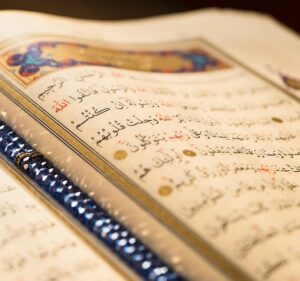
Etymology of Gate Names
The linguistic exploration of gate names involves a deep dive into Arabic etymology. Understanding the roots and derivations provides insights into the intended meanings.
For instance, the etymology of a gate named after a historical figure might offer clues about the significance of that figure in Islamic history.
The Historical Tapestry Woven in Names
Each gate, with its distinct name, is a stitch in the historical tapestry of Masjid Al Nabawi.
Names may commemorate pivotal events or serve as reminders of spiritual milestones. Unraveling these historical connections adds layers of depth to the mosque’s narrative.
Names Reflecting Cultural and Spiritual Significance
Cultural Symbolism in Gate Names
The names of the gates are not only linguistic expressions but also carriers of cultural symbolism. They may reflect local traditions, historical contexts, or the influence of diverse Islamic cultures.
Understanding this cultural resonance enhances the appreciation of Masjid Al Nabawi’s gates as living monuments of cultural diversity within Islam.
Spiritual Dimensions Embodied in Names
Beyond historical and linguistic meanings, the names of the gates embody spiritual dimensions. They serve as invitations to contemplation and spiritual reflection.
For instance, a gate named the “Gate of Peace” signifies tranquility in its literal sense and encourages worshippers to enter with a peaceful and mindful heart.
Gates as Guardians of Spiritual Themes
With its unique name, each gate becomes a guardian of specific spiritual themes. Whether it is humility, gratitude, or seeking divine knowledge, the gates act as portals that encapsulate these themes.
Worshippers entering through a particular gate may find themselves immersed in a spiritual ambiance aligned with the gate’s name.
Unique Features of Each Gate
The Gates of Masjid Al Nabawi are not only distinctive in name but also in their architectural features and spiritual significance. Each gate tells a story, with its unique charm and historical resonance.
In the subsequent section, we will explore the spiritual significance of the Gates of Masjid Al Nabawi, unraveling the rituals and traditions associated with these sacred thresholds.
The Names and Meanings – Unraveling the Significance Behind Names
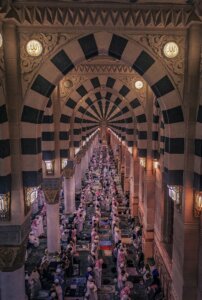
The gates of Masjid Al Nabawi, like chapters in a sacred script, bear names that echo through the corridors of history. Each name is a thread connecting the present to the past, carrying a significance that transcends mere nomenclature.
In this section, we will explore some of the most prominent gates, delving into their historical events, architectural details, and the spiritual significance they hold for worshippers.
Gates After the Second Saudi Expansion
The first and second Saudi expansions took place after Prophet Muhammad’s (SAW) era, significantly enhancing the mosque’s glory and magnificence. However, the mosque is still located in the same compound.
The global increase in the Muslim community led to the notion that the walls of the Prophet Muhammads’ (PBUH) mosque, Masjid-e-nabawi, need to emerge. Thirty-nine new gates were installed to cover the compound following the second expansion.
The names of the gates after the second expansion are;
- Bab as-Salam
- Bab al-Hijra
- Bab Malik al-Saud
- Bab al-Aqeeq
- Bab Abu Bakr
- Bab Imam Bukhari
- Bab Badr
- Bab al-Majeedi
- Bab Ohad
- Bab Quba
- Bab al-Rahmah
- Bab Uthman Ibn Affan
- Bab Abu Zar Ghaffari
- Bab Ali Ibn Talib
- Bab Makkah
- Bab an-Nisa
- Bab Bilal
- Bab al-Rahmah
- Bab Umar Ibn al-Khattab
- Bab Malik al-Fahad
- Bab Imam Muslim
- Bab Bilal
- Bba Malik Abdulazziz
- Bab ul-Aimah
- Bab Jibril
- Bab al-Baqri
Gate of Jibril (Gabriel): A Celestial Connection
One of the gates, often referred to as the Gate of Jibril, holds profound significance. Named after the archangel Jibril, this gate symbolises a celestial connection.
The name itself invokes the spiritual realm, emphasising the role of divine messengers in Islam.
Historical Events Associated with this Gate
The Gate of Jibril stands as a celestial witness to numerous historical events, but most notably, it is linked to the arrival of divine revelations.
Tradition holds that the archangel Gabriel conveyed messages from Allah to Prophet Muhammad (PBUH) through this gate, establishing it as a sacred point of connection between the earthly and the divine.
Architectural Details and Unique Features
Architecturally, the Gate of Jibril carries elements that distinguish it from others.
Intricate carvings depicting angelic figures and celestial motifs, creating an atmosphere that resonates with the spiritual importance associated with Gabriel’s role in Islamic revelation.
Spiritual Significance and Traditions
For worshippers, passing through the Gate of Jibril is not a mundane act but a spiritual experience.
Many believe that entering through this gate enhances the connection with the divine and brings blessings.
Traditions suggest reciting prayers or seeking specific supplications as one passes, emphasising this gate’s spiritual significance in personal and communal worship.
Gate of Peace: Tranquil Entry into Spiritual Serenity
The Gate of Peace, also known as Bab al-Salam, stands as a sublime entryway into a realm of spiritual serenity within the sacred precincts of Masjid Al Nabawi.
Within this gate, the spiritual journey transcends the physical, fostering a profound connection with the divine in a haven of peace and calm.
Historical Events Associated with this Gate
The Gate of Peace carries a name that encapsulates its historical and spiritual essence. This gate has witnessed moments of peace and tranquility within the mosque’s rich history, becoming a symbol of serenity amid the bustling spiritual activity.
Architectural Details and Unique Features
Architecturally, the Gate of Peace is adorned with motifs representing tranquility and harmony. The design incorporates elements that invoke a sense of calmness, creating a visual and spiritual contrast to the vibrant energy within the mosque.
Spiritual Significance and Traditions
Passing through the Gate of Peace is considered an act of seeking tranquility and spiritual calmness.
Worshippers entering through this gate often engage in silent prayers, reflecting on the peaceful nature of the mosque.
The traditions associated with this gate encourage worshippers to carry the sense of peace acquired within to the outside world.
Gate of King Al-Saud: Bab Malik Al-Saud
Malik al-Saud Bab was built during the first Saudi expansion and named after King Saud bin Abdulaziz.
Historical Events Associated with this Gate
The gate of Malik al-Saud was built during the first Saudi expansion following the commands of King Saud bin Abdulaziz.
Architectural Details and Unique Features
It has seven entries, including large and small flanks retrieved on its side. It has only one minaret, which is also one of the largest minarets of the Prophet Muhammad’s (PBUH) mosque.
Spiritual Significance and Traditions
The walls of the Malik al-Saud gate signify the importance of Muslim traditions and harmony.
Gate of Literacy: Bab Umar Ibn al-Khattab
The gate of Umar Ibn al-Khattab is located in the western complex of the Prophet Muhammad’s (PBUH) mosque.
Historical Events Associated with this Gate
The bab Umar Ibn al-Khattab is linked to the Caliph and close companion of the Prophet Muhammad (SAW), Umar Ibn al-Khattab. According to historical evidence, it has been proved in multiple sources that Umar Ibn al-Khattab was very dear to Prophet Muhammad (SAW), such that he relied upon him for the safety and safeguarding of Islam.
Therefore, this bab, Umar Ibn al-Khattab, holds much importance in the history of Saudi expansion.
Architectural Details and Unique Features
The bab Umar Ibn al-Khattab is located in the North-West are of the first expansion of the mosque.
Spiritual Significance and Traditions
The complex of bab Umar Ibn al-Khattab gives access to the mosques exclusive library which has all of the sacred books retrieved. The spiritual guidance retrieved in the books and literature of this library is all that one needs to fill one’s soul.
Gate of Patience: Endurance in the Face of Challenges
The Gate of Patience, or Bab al-Sabr, serves as a poignant entrance to Masjid Al Nabawi, embodying the spirit of endurance in the face of challenges.
Stepping through this gate is not just a physical act but a symbolic passage into a space that reverberates with the strength derived from patience.
Historical Events Associated with this Gate
The Gate of Patience embodies the resilience of the Muslim community throughout history. It has been witness to moments of adversity, reflecting the enduring spirit of patience in the face of challenges.
Architectural Details and Unique Features
Architecturally, the Gate of Patience features motifs and inscriptions conveying the strength of patience. The design serves as a visual reminder of the virtue of perseverance in the Islamic tradition.
Spiritual Significance and Traditions
Passing through the Gate of Patience is seen as a symbolic act of seeking strength during difficult times.
Worshippers may recite prayers for patience and steadfastness, drawing inspiration from the historical events associated with this gate. It stands as a testament to the enduring spirit of Islam.
Continue exploring the unique features of other gates, diving into their historical events, architectural details, and spiritual significance. Each gate unfolds as a chapter in the sacred narrative of Masjid Al Nabawi.
Cultural and Community Impact

Contribution to the Sense of Community
The Gates of Masjid Al Nabawi extend beyond their architectural and spiritual significance, playing a vital role in fostering a sense of community among worshippers.
As people from diverse backgrounds gather in this sacred space, the gates become symbolic meeting points where the collective identity of the Muslim community is reaffirmed.
Communal Gathering Points
The gates serve as natural gathering points for worshippers entering and exiting the mosque. These moments of congregation provide opportunities for social interactions, fostering a sense of unity and shared purpose.
Through its gates, the mosque becomes a place where individuals connect not only with the divine but also with one another.
Rituals of Greeting
Cultural practices often involve unique rituals of greeting at the gates.
Friends and family members may arrange to meet at a specific gate before or after prayers, creating a cultural tradition that adds a personal touch to the communal experience.
These interactions contribute to the vibrant social fabric within and around Masjid Al Nabawi.
Cultural Practices Related to the Gates
Gate-Specific Traditions
Different gates often have gate-specific traditions associated with them. Communities may develop customs related to the history or name of a particular gate, adding layers of cultural significance to the worship experience.
These practices serve as a bridge between the spiritual and cultural aspects of the Muslim identity.
Cultural Celebrations and Events
The gates also become focal points during cultural celebrations and events.
Whether it’s the commemoration of historical events, religious festivals, or community gatherings, the gates act as symbolic landmarks around which cultural activities unfold.
These events contribute to the rich tapestry of cultural practices within the mosque.
Impact on the Local and Global Muslim Community
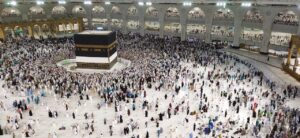
Local Community Integration
Masjid Al Nabawi and its gates play a crucial role in the daily lives of the local Muslim community in Medina.
The mosque is not just a place of worship; it’s a central hub for various activities, from educational programs to social services.
The gates become entry points to prayer and a thriving community that supports and uplifts its members.
Global Symbolism
Beyond the local context, Masjid Al Nabawi holds global significance as one of the holiest sites in Islam.
The gates, as iconic symbols of this sacred space, become visual representations of the unity of the global Muslim community.
During their pilgrimage or visits to Medina, Muslims from around the world share a collective experience of entering through these gates, reinforcing a sense of universal brotherhood.
Symbol of Unity and Diversity
The gates, with their diverse names and cultural associations, embody the unity within diversity present in the Muslim world.
They signify that despite geographical distances and cultural variations, worshippers from different corners of the globe are bound together by a shared faith.
This symbolism contributes to the mosque’s role as a global spiritual center.
In the next section, we will explore the efforts dedicated to preserving the historical and architectural integrity of the Gates of Masjid Al Nabawi, ensuring their legacy for future generations.
Preservation Efforts and Changes
Initiatives to Preserve Historical and Architectural Integrity
Preserving the historical and architectural integrity of the Gates of Masjid Al Nabawi is a concerted effort that involves various initiatives.
Conservation projects aim to maintain the authenticity of the gates, ensuring that their original design and cultural significance are safeguarded.
Preservation efforts include regular maintenance, restoration of intricate details, and the use of traditional craftsmanship to uphold the gates’ historical charm.
Preservation of Cultural Heritage
Numerous organisations and authorities collaborate to implement cultural heritage preservation programs.
These initiatives encompass research on the historical context of the gates, employing experts in Islamic art and architecture, and utilising advanced technologies to ensure accurate restoration.
The goal is to safeguard the gates as invaluable cultural treasures for future generations.
Recent Changes or Renovations
Integration of Modern Techniques
Recent changes and renovations at Masjid Al Nabawi often involve a delicate balance between preserving heritage and meeting contemporary needs.
While adhering to historical authenticity, modern techniques are employed to enhance structural stability and accessibility.
Innovations such as advanced materials and sustainable technologies may be integrated to ensure the longevity of the gates.
Aesthetic Enhancements
Renovations also offer opportunities for aesthetic enhancements, respecting the original design while incorporating elements that complement the evolving architectural landscape.
These changes aim to strike a harmonious balance between the timeless charm of the gates and the practical requirements of a modern, bustling mosque.
Balancing Preservation with the Needs of the Growing Muslim Community
As the Muslim community continues to grow, Masjid Al Nabawi faces the challenge of accommodating increasing numbers of worshippers while preserving its historical essence.
Striking a balance between preservation and growth involves thoughtful urban planning, innovative architectural solutions, and community engagement.
The ongoing challenge is to expand the mosque’s capacity without compromising the sanctity and cultural significance of the gates.
Personal Reflections

- A Universal Journey into Spiritual Splendor
Entering the Gates of Masjid Al Nabawi is an experience that transcends individual narratives—a universal pilgrimage that encapsulates the hearts of all who tread its sacred thresholds.
As you approach these majestic gates, a profound sense of reverence envelops you, echoing the collective devotion of countless worshippers who have come before.
- The Call to Prayer: A Melody of Unity
The resonant call to prayer emanates from the minarets, weaving through the air and guiding you toward the gates. Its melody, a timeless invocation, beckons souls to unite in worship.
As you step closer, the rhythmic echoes amplify, becoming a heartbeat that syncs with the pulse of the community.
- Architectural Grandeur: An Ode to History
The architectural splendor of the gates unfolds like a living tapestry. Intricate carvings and ornate details narrate stories of a bygone era, inviting you to partake in the rich history of Islam.
The gates are not only physical thresholds but portals to an ancient legacy that reverberates through time.
- Spiritual Atmosphere: A Breath of Tranquility
Crossing through the gates, you step into a realm of tranquility. The air is thick with spiritual energy, a collective sigh of devotion that transcends language and culture.
It is a space where individual prayers blend into a symphony of whispered supplications, creating an atmosphere that resonates with the sacred.
- Collective Devotion: Embracing Unity
As you join the flow of worshippers, a sense of unity transcends individual identity. Shoulder to shoulder, the diversity of those around you becomes a mosaic of shared faith.
The gates, symbolic entrances to a sacred sanctuary, become bridges that connect hearts in a moment of shared devotion.
- Timeless Rituals: A Dance with Tradition
Engaging in timeless rituals at the gates becomes a dance with tradition. The act of reciting prayers, seeking blessings, and making supplications transforms into a harmonious rhythm.
Each step is a note resonating with the footsteps of countless pilgrims who have traversed these pathways before.
- Silent Conversations: A Dialogue with the Divine
Within the embrace of the gates, there is an unspoken dialogue with the divine. It’s a moment of reflection, a communion of souls expressing gratitude, seeking forgiveness, and silently laying bare the depths of the heart.
The gates become witnesses to a sacred conversation that transcends the audible.
- Universal Invitation: Your Journey Awaits
As you immerse yourself in the sacred ambiance beyond the gates, the experience becomes a universal invitation—a call for all to witness, feel, and partake in the spiritual grandeur of Masjid Al Nabawi.
Much like those who have trodden these paths, your journey becomes a testament to the timeless connection between humanity and the divine.
Conclusion – Gates of Masjid Al Nabawi
In the intricate tapestry of Masjid Al Nabawi, the Gates stand as timeless witnesses to the Muslim community’s rich history, profound spirituality, and universal unity.
Each gate is a portal to the mosque and a transcendent journey that echoes through generations.
Preserving and understanding the Gates of Masjid Al Nabawi is not just a duty but a sacred responsibility. As we strive to maintain their historical and architectural integrity, let us also seek a profound understanding of their spiritual significance.
May these gates continue to stand as beacons of unity, inviting generations to embrace Islam’s spiritual sanctuary.
Through His Names
New course with
Ustadh Shabbir Hassan







